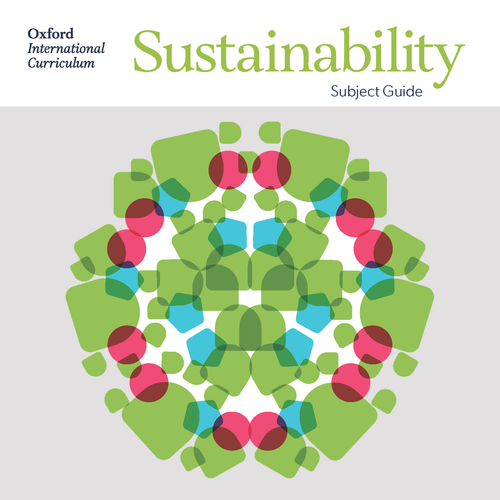Welcome to Our Blog
Check out this fun video of Jaimie engaging with students at the Chinese International School in Hong Kong.
The Student Kitchen is a nonprofit focused on culinary education for New York City middle and high school students. The goal of the program is to equip students with the confidence and the skills to cook for themselves and families, make healthy choices, and better understand where their food comes from. Through live demos and workshops, The Student Kitchen works hands on with participants at their schools and in their communities. They also assist with mutual aid efforts and community projects.
There is a great deal of good news that we are excited to share!
First and foremost, the official cover is out! This milestone makes the project feel wonderfully real and we are loving its dynamism.
We are very excited to share the book blurb:
For young people and all those who love them, this is an uplifting and practical book of wisdom. Written with a game on mindset, Response-able is a must read for those who want to participate in thegrand course correction toward a sustainable future.
Our Oxford International Curriculum for Sustainability continues to gain momentum!
Since its publication, the series has won the 2024 GESS Education Award, was nominated for the BESA Sustainability and Net Zero Award 2025, was presented by Daniella Tilbury to the UN Economic Commission for Europe (UNECE) during a meeting of the Education for Sustainable Development (ESD) Steering Committee in Geneva.
Recommended Reading: Connected to Place by Matt Daggar
We recommend keeping an eye out for Connected to Place: Regenerating Nature, Communities and Local Economies through Systems Change, a new book by Matt Daggar coming in November 2025.
Stories from Nora Bateson — “How Our Ways of Knowing Shape Our Collective Future”
In this piece, Nora Bateson, calls for a more relational, context-rich “warm data” approach to achieve social and ecological regeneration and sustainability.
638 educators from around the world joined our latest International Baccalaureate (IB) webinar on how to integrate Education for Sustainability (EfS) into the Primary Years Programme (PYP). The engagement was exceptional!
For anyone who was unable to attend, we will soon receive the chat comments and the full recording, and we will be pleased to share both. You can write to admin@cloudinstitute.org
We are also pleased to confirm that two additional IB webinars will take place later this year, focusing on the Middle Years Programme (MYP) and the Diploma Programme (DP). Dates will be announced soon.
A recent report and series of contract negotiations spotlight how teachers’ unions across the U.S. are using collective bargaining to demand climate action in schools.
In Chicago, the teachers’ union secured commitments for installing solar panels, enhancing indoor air quality monitoring, and integrating climate curricula. Meanwhile in Minnesota, educators pressed for an environmental task force and free transit access, and in Los Angeles, the demands include electrifying bus fleets and installing EV charging stations at schools. These moves underscore how contract talks are powerful levers for climate progress.
Oregon has passed a new law requiring climate change and sustainability to be integrated across school subjects — thanks in large part to the persistence of Mikayla May, a student at Caldera High School in Central Oregon.
Mikayla became the driving force behind House Bill 3365 after noticing that her classes taught the science of climate change but not the solutions. “We’re only taught the problems and the causes of climate change,” she said. “We don’t learn anything about the solutions.” Determined to change that, Mikayla partnered with Oregon Educators for Climate Education and testified before lawmakers, helping push the bill through the 2025 legislature.
We were delighted to deliver a recent webinar for Oxford University Press, as part of our ongoing collaboration on the Oxford International Curriculum for Sustainability. The session, led by Jaimie Cloud, invited educators from around the world to explore how sustainability can be meaningfully integrated into everyday teaching and learning.
If your school, organization, or network is interested in learning more about Education for Sustainability, Jaimie Cloud offers engaging webinars and professional development sessions tailored to your community’s needs. Contact us to schedule a session or learn more.
The Green Schools Conference (GSC) returns for its 16th year and registrations are now open!
Bringing together educators, school leaders, advocates, and changemakers who drive whole-school and district sustainability, this energizing two-day event explores bold, practical solutions to advance green schools, focusing on environmental impact, health and well-being, sustainability literacy, and systemic change at every level of education.
We are thrilled to announce the new Cloud Institute for Sustainability Educationwebsite — your refreshed gateway to exploring, engaging with, and advancing Education for Sustainability (EfS).
For 30 years, The Cloud Institute has empowered educators, students, and communities to rethink how we learn, live, and lead in a more sustainable world. Now, our new site reflects that legacy with an enhanced user experience, streamlined navigation, and deeper access to our work.
At the Cloud Institute, we are always excited to spotlight new resources that bring education for sustainability to life in vivid, accessible ways. Last spring, we shared a wonderful new Earth system science website called Story.Earth, developed by our long-time partners, WorldLink. Like us, WorldLink’s work is deeply inspired by the ideas of Buckminster Fuller—cultivating systems thinking, futures thinking, and ecological literacy.
Last week, we gathered with an incredible group of educators, leaders, and changemakers for our annual Curriculum Design Studio. This signature workshop is always a highlight for us at the Cloud Institute, and this year was no exception.
Over the course of the week, participants came together in a hybrid format—both in-person and online—to design, refine, and reimagine curriculum that prepares young people for a sustainable future.
In October 2025, the Cloud Institute will be offering an Education for Sustainability workshop in the Nakivale Refugee Camp in Uganda. This is a project initiated by Rosemarie, our program specialist here at the Cloud Institute.
We are proud to share that the Oxford International Curriculum for Sustainability has been nominated for the BESA Sustainability and Net Zero Award 2025!
We had a wonderful pre-sale launch event last week—thank you to everyone who joined us for this special moment! The pre-sale campaign for Response-Able is still underway, and the book is available for pre-order below. You can choose from the eBook, paperback, signed paperback, or class sets.
We are thrilled to invite you to a special event celebrating the upcoming release of my new book, Response-Able: How to Live Well Over Time on Planet Earth!
🌎 Pre-Sale Launch Event Details
Date: May 15, 2025
Time: 12:00 PM – 1:30 PM EST
Location: Online (registration link will be shared after you sign up)
We are excited to announce the upcoming release of Response-able: How to Live Well Over Time on Planet Earth, a powerful new book by sustainability education pioneer Jaimie P. Cloud!
In Response-able, Jaimie invites young people—and the young at heart—to reimagine their relationship with the world and step into their role as creators of a sustainable future. This book offers a refreshing and empowering guide for anyone ready to think differently about how we live, learn, and lead on planet Earth.
By pre-ordering, you are helping to cover the final publishing, editing, and marketing costs—and ensuring this important book reaches more readers who can use it to make a difference.
We are proud to share that our team member, Rosemarie Desmarais, has published a review of Stephen Sterling’s latest book in the Australian Journal of Environmental Education.
The review is open access and offers a clear, thoughtful summary of the book’s key insights and contributions.
In a recent Q&A with Ten Strands, Jaimie reflects on her transformative journey in sustainability education over the past three decades. She shares how her early experiences in global education shaped her journey, the evolution of Education for Sustainability, and what gives her hope for the next generation.
This year’s curriculum design studio will be hosted on August 11-15 in-person at the Omega Center in Rhinebeck, New York and online via Zoom. You can join us for the five day curriculum design & coaching program or for a one day introduction to Education for Sustainability.
This animated poem, beautifully narrated by Jane Goodall, is both moving and inspiring. It invites us to reflect on the importance of nurturing reciprocal relationships with nature, the profound beauty that surrounds us, and the role we can all play in shaping a sustainable future.
Story.Earth makes Earth system science accessible and meaningful with beautiful visualizations, interactive maps and globes, and NGSS-aligned lesson plans. Students explore real-world data, analyze patterns of change, and develop solutions for a sustainable future. Perfect for inspiring a global perspective and making connections across disciplines. Explore for free at Story.Earth. An ideal Earth Day resource!
We are excited to share a fun opportunity for educators and students! The EcoHero Earth Day Livestream Concert is a high-energy, interactive event that has already engaged over 1.2 million students across thousands of elementary schools worldwide. This Earth Day, April 22nd, your students can be part of this global movement—learning about sustainability through music, rap, and fun, all while contributing to real-world change!
At the recent Green Schools National Conference in Orlando, Florida, we had the privilege to visit Arbor Ridge Elementary School. Arbor Ridge has received first place in the green schools recognition program, the Florida Green Apple award by the Florida Department of Environmental Protection and the Green Ribbons Schools award by the US Department of Education.
We toured the school and the campus and a team of faculty members attended our afternoon workshop on vertical articulation of Education for Sustainability. Among many hey have composting in the cafeteria, a living garden.
Under the close supervision of professors from the University of Illinois, middle schoolers were trained how to safely collect and grow bacteria. One youth identified a bacterium that might create new cancer treatments and antibiotics.
They were part of a 14-week educational outreach program to promote scientific careers with hands-on experience.
Our friends and colleagues at Green Ninja put together some useful resources to help New York State teachers prepare their students for the Science Tests.
Watch the full webinar recording featuring expert Matt d'Alessio or review key highlights and takeaways from the presentation.
Jaimie will be leading two workshops at the Woodward’s Summit for Transformative Learning (STLinATL) hosted by Woodward Academy on March 10 and 11, 2025!
The Summit will explore the theme “Embracing the Future of Education” as a beacon lighting the path ahead for deeper learning.
Jaimie’s workshops will focus on:
Educating for Sustainability with the Brain in Mind
Effective Practices for Aligning and Integrating Education for Sustainability (EfS) into Core Curriculum
The Cloud Institute Turns 30! 🎉
2025 marks 30 years of The Cloud Institute inspiring and equipping educators to shape a sustainable future! We’re celebrating with new professional learning experiences, game-changing curriculum collaborations, and the release of my book, Response-able. The work is expanding at an incredible pace - more schools, more communities, and more young people are stepping up to lead the shift toward sustainability. I’m grateful for our brilliant team, our trusted partners, and the momentum we’ve built together. Here’s to the next 30 years!
If you are an International Baccalaureate (IB) teacher with an IB Exchange account, check out the new Commons microlearning modules co-developed with the Cloud Institute.
These microlearning modules are available to educators who want to understand more about the Commons and those who want to undertake the micro-credential Recognizing and Protecting the Commons.































